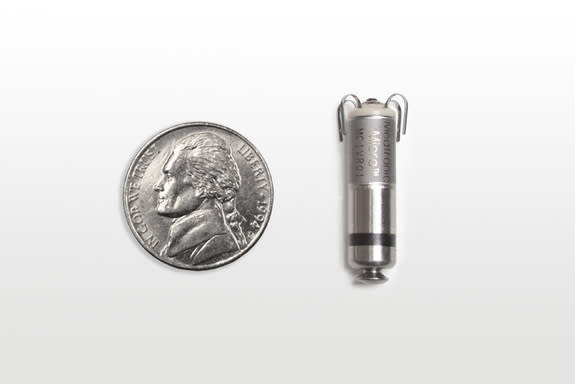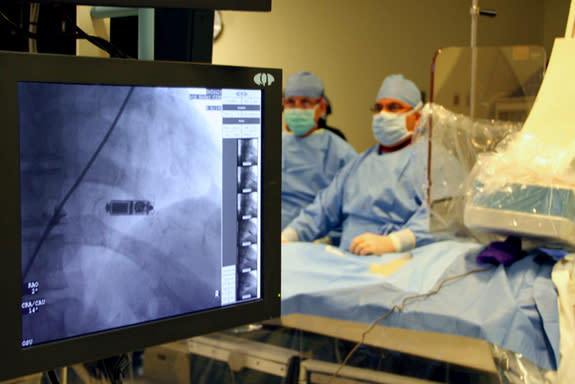Implanting the World's Smallest Pacemaker, Inside the Heart
Dr. John Hummel is a cardiologist at The Ohio State University Wexner Medical Center and a consultant for Medtronic, which is funding the research. He contributed this article to Live Science's Expert Voices: Op-Ed & Insights.
A device as small as a vitamin pill could have a big impact for many patients with heart disease . Unlike conventional pacemakers, which require a chest incision and electrical leads that run through a vein to the heart, the new device is wireless and is implanted without surgery — threaded into place through a catheter, surgeons attach the implant directly to muscle inside the heart.
As part of an international clinical trial at Ohio State University's Ross Heart Hospital, my colleagues and I are testing the system — at just 24 millimeters in length (90 percent smaller than any current model), it is the smallest pacemaker available in the world.
More than three million people have pacemakers, and that number is only expected to rise. If the technology works the way we hope, it could not only benefit patients, but it would be more efficient, cutting procedure time down by more than half and reducing the potential for complications.
For now, we’re testing this device in patients with bradycardia who need single chamber ventricular pacing. Single chamber pacemakers are devices that use one lead in the upper chambers (atria) or lower chambers (ventricles) of the heart. Bradycardia is a slow heart rhythm that prevents the heart from pumping enough blood into the body — it can cause fatigue, dizziness, shortness of breath and fainting.
Because of the new model's size and simplicity, 77-year old Mary Lou Trejo of Columbus was eager to be one of our first patients to participate in the trial. For years, she suffered from atrial fibrillation : Her heart was frequently slowing despite medication and other treatments to restore rhythm.
My colleague, Dr. Ralph Augostini, and I put the pacemaker into place, and now it can track Trejo's condition, only activating when necessary. With its intermittent pacing, the tiny pacemaker could remain active for up to 14 years, and we hope it will have a significant impact on her quality of life.
The current trial of the Medtronic device, called the Micra Transcatheter Pacing System (TPS), will enroll 780 patients in 50 centers worldwide. We expect to report initial findings once the first 60 patients have been in treatment for three months.
Follow all of the Expert Voices issues and debates — and become part of the discussion — on Facebook, Twitter and Google +. The views expressed are those of the author and do not necessarily reflect the views of the publisher. This version of the article was originally published on Live Science.
Copyright 2014 LiveScience, a TechMediaNetwork company. All rights reserved. This material may not be published, broadcast, rewritten or redistributed.




